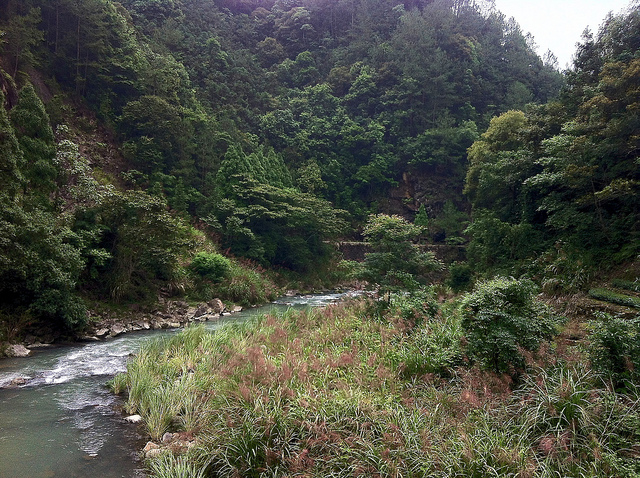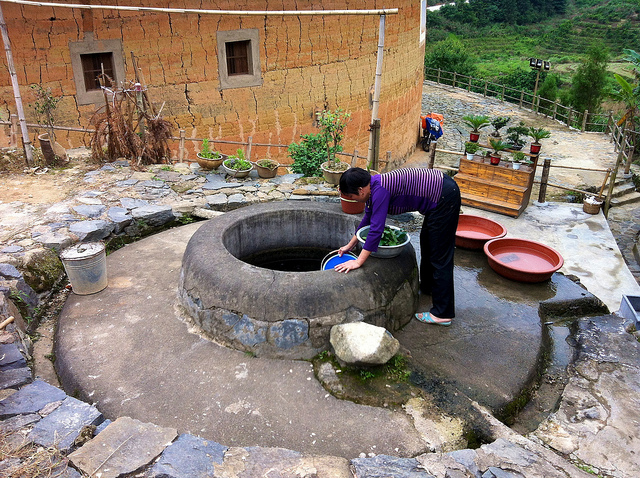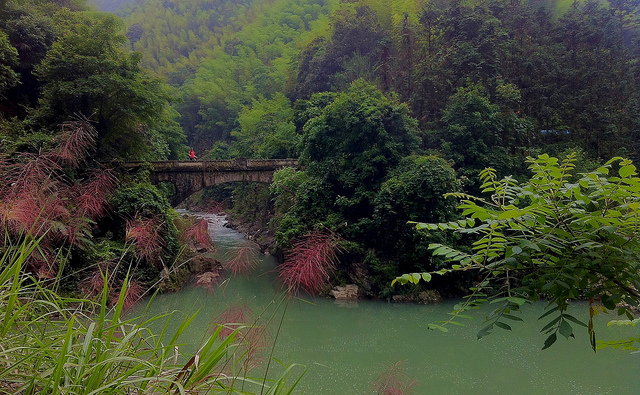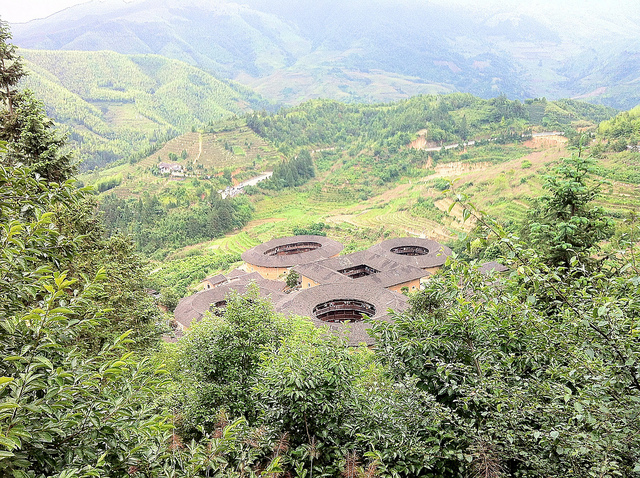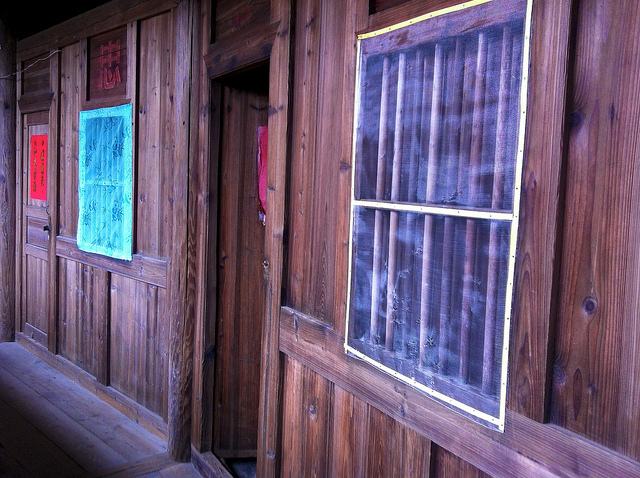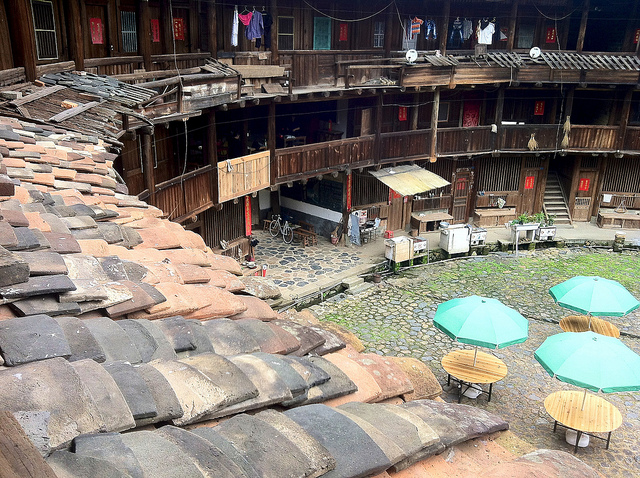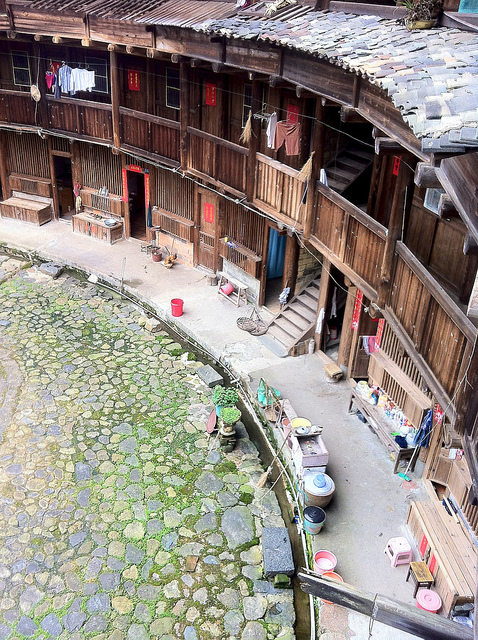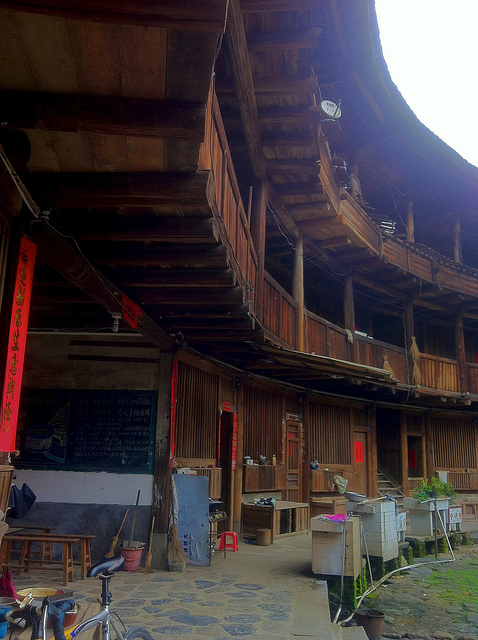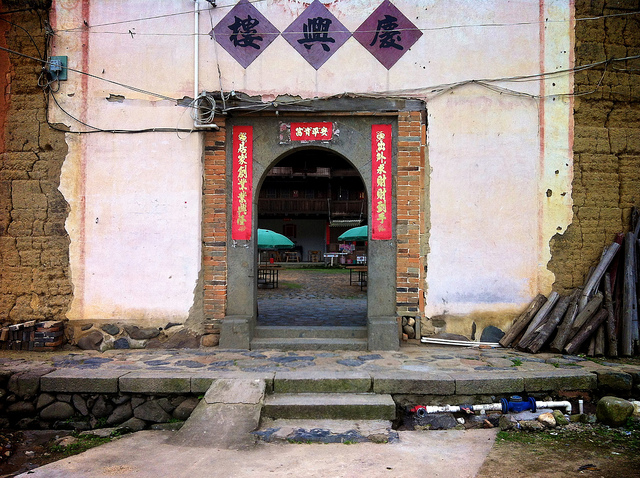At some point in the history of China's ebb and flow of progress, the local Fujianese discovered agoraphobia. They clubbed together to build what are essentially little community castles.
Over the next couple hundred years, some 20,000 of these circular (sometimes oval, sometimes square) buildings were knocked together from mud (hence their name, Tulou: "Earth Structure") and whatever else was laying around. The result is a thick walled, sturdy, inwardly-facing donut residence for eighty or so farming families.
From the outside they're impenetrable toughness. Three or four stories of 6-foot thick wall, slits for windows and only one iron-clad door. Fierce. Inside is a different story. From the middle of a circular cobbled courtyard is a wooden hive of accommodation. Around each floor runs a corridor from which thirty or so rooms join into a loop. It's like a donut motel. Nothing is private.
They're reminiscent of the Shakespearean Globe Theatre, only larger and perhaps Byker Wall, only older. Of course they're not really products of the fear of open spaces, nor a complete disregard for privacy but an effective way to share resources, withstand earthquakes and ward off attacks from The Others.
Nowadays they've mostly fallen down or into disrepair (this is China). The ones that are still standing are either on their way out, turned into nightclubs, snapped into inevitable antitourism by UNESCO or slowly, perhaps fondly, taken over by the more progressive descendants of a once dwelling family.
We have the fortune to know someone in the latter category and so, in the dead of night, three hours outside of Xiamen, we pulled into a weekend-retreat Tulou of our almost-very own.
'This one in particular is of a young and beautiful age', explains the almost spiritual PHD researcher staying for a few days to interview the half-dozen remaining residents. Once home to almost a hundred, it's now 75% owned by one family, 90% vacant and for the time-being a base-camp for Tulou spotters as they rove the area.
It has all the charm of something old and Chinese. Functionally ornate and somehow calmingly complex. It feels slightly backwards, as if created by a civilisation that had it wrong all-along but admirably stuck to the plan. In the surrounding area are many more examples. Mostly husks of somewhere left behind when a better idea came along. The truth is this all happened more recently than you'd think.
Down the road, past the waterfall and up the hill (and further than we expected by bike) is the flagship cluster of Tianluokeng. Here the three circular Tulou, one oval and one square have been overrun by the busy tourism ants. We were there on the same day that the local chintz-board were delivering their display stands to the occupants. We politely refused the hand-rolled cigarettes, fake Mona Lisa paintings and bullhorn rattles to wander through their kitchens and admire the central well - an evocative reminder of how the other half lives.
